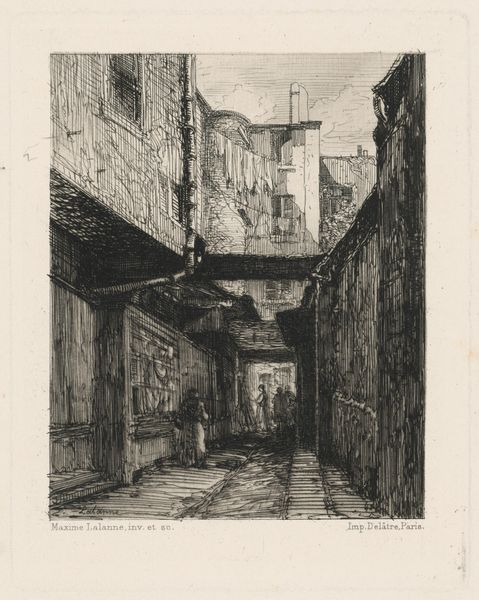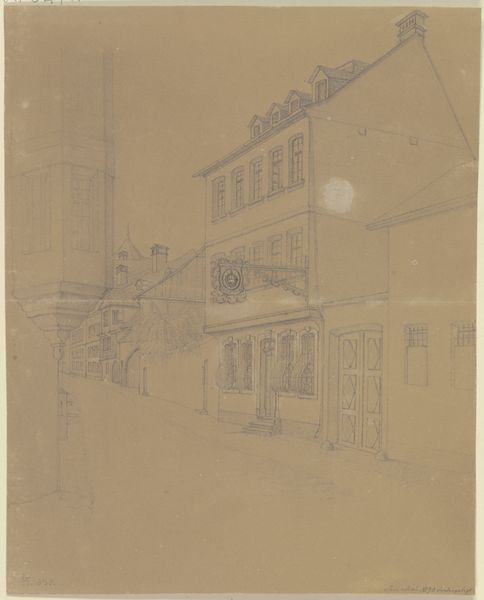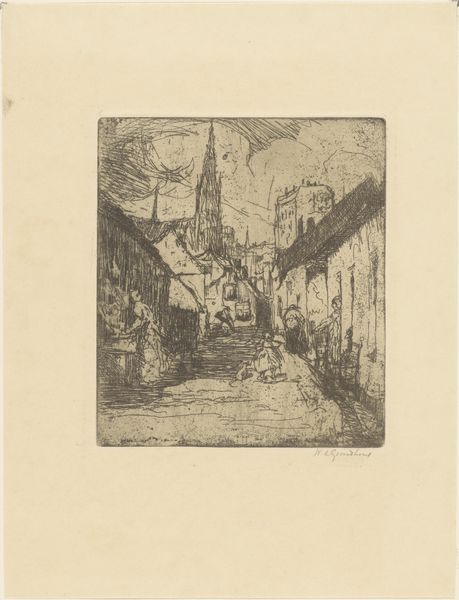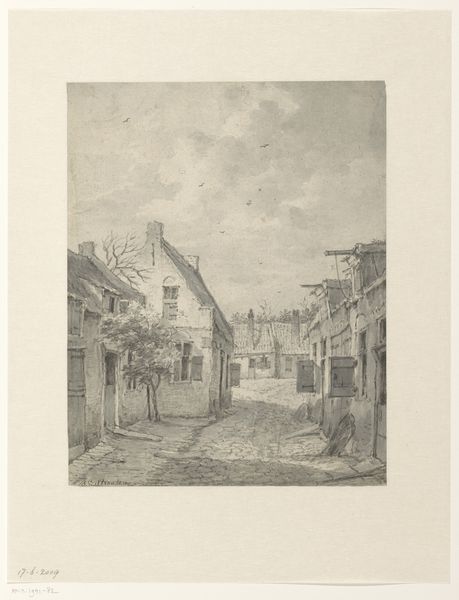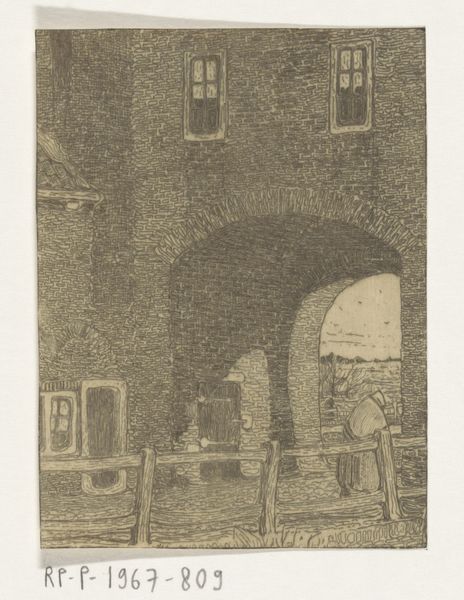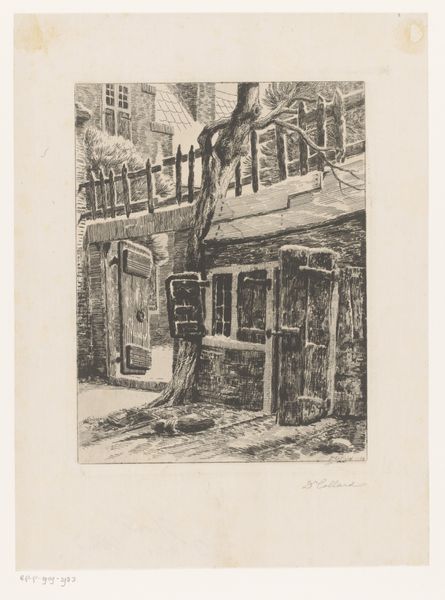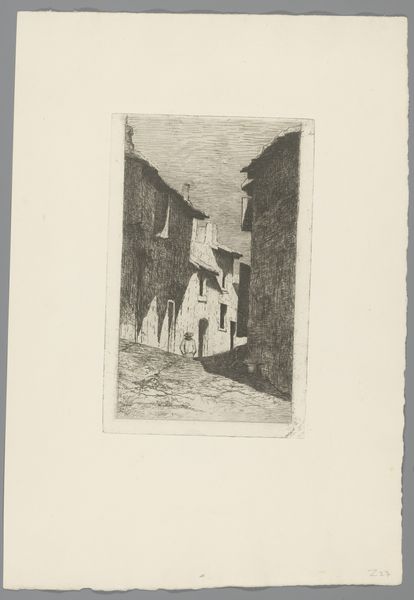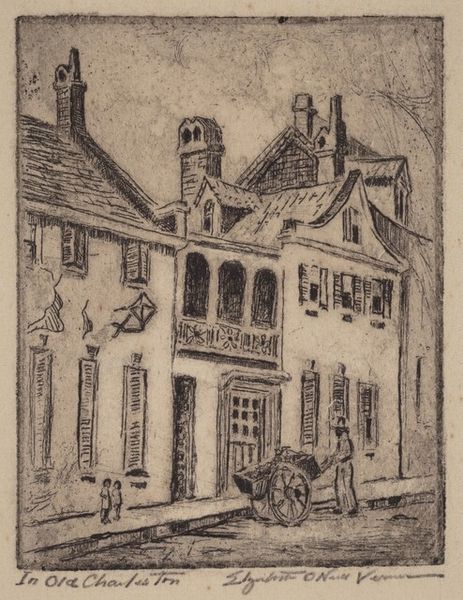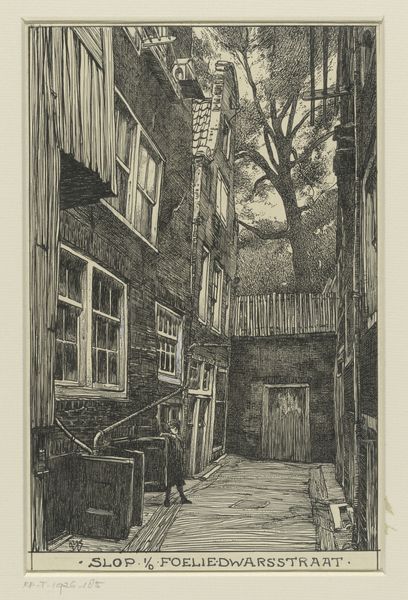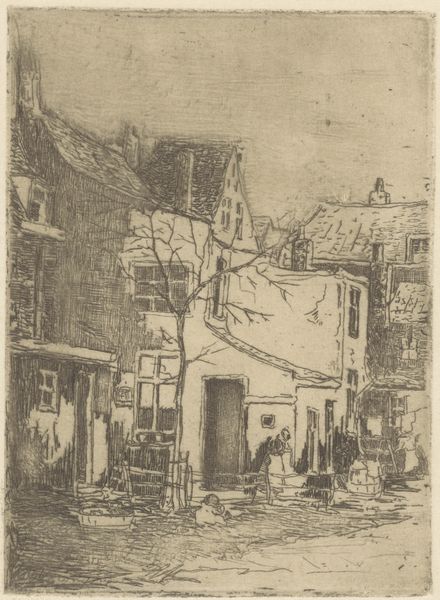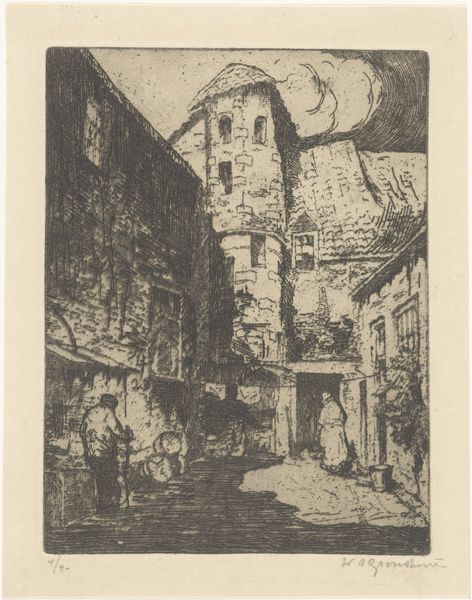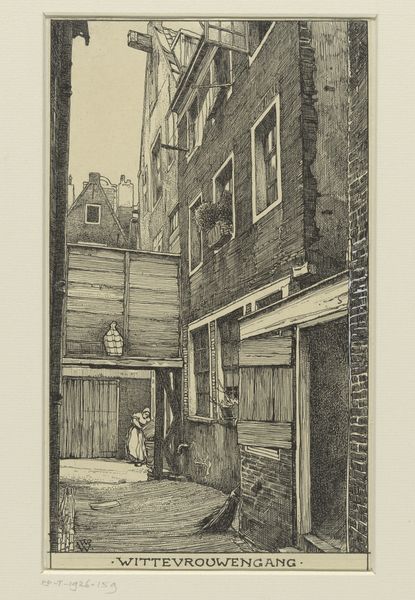
drawing, print, etching
#
drawing
# print
#
etching
#
landscape
#
german-expressionism
#
cityscape
#
realism
#
building
Dimensions: plate: 7 x 5 1/16 in. (17.8 x 12.8 cm) sheet: 10 1/16 x 6 7/8 in. (25.5 x 17.5 cm)
Copyright: Public Domain
Curator: This etching, "Lille: Liebesgässchen," by Ernst Oppler, dating back to 1916, captures a street scene with an uncanny stillness. It’s currently held here at the Metropolitan Museum of Art. Editor: There's a haunting quality about it, isn't there? A kind of spectral quiet, as if the scene is captured just before or after something significant happens. It almost feels staged. Curator: It does evoke a sense of theater. Oppler, despite his involvement with German Expressionism, had a keen eye for societal dynamics, especially within urban landscapes. You see those shadowy figures in the distance? Editor: Yes, they seem to almost melt into the background, like figures in a dream. The heavy use of shadow really amplifies the anonymity. Considering its creation during World War I, I can’t help but see it reflecting a city under pressure, maybe even occupation. The Liebesgässchen, the Love Lane...it sounds idyllic, but the image conveys a feeling of constraint. Curator: Precisely. That tension is central. Oppler's German Expressionist approach allowed him to imbue realism with a sense of unease, emphasizing the psychological weight of the time. Look at how light struggles to penetrate the darkness. This symbolizes perhaps, the struggle to find beauty or normalcy amidst the war’s grim realities. Editor: The street, paved with those sharp light lines, draws you into the scene, but then the darkness around the architecture hems you in. It really encapsulates the push-pull dynamic between hope and despair, intimacy and alienation. The name is ironic when looking at that kind of scene, full of shadows. Curator: He seems intent on probing that tension. Though Oppler eventually turned toward portraying performers in lighter, almost impressionistic scenes, works like this, steeped in their socio-political milieu, offer powerful counterpoints. Editor: It certainly gives us something profound to contemplate – how personal connection and affection persist, or struggle to, under such circumstances. A snapshot of humanity at odds with history.
Comments
No comments
Be the first to comment and join the conversation on the ultimate creative platform.
